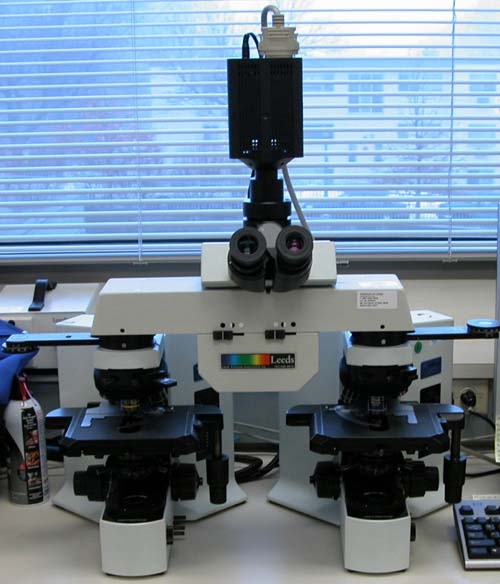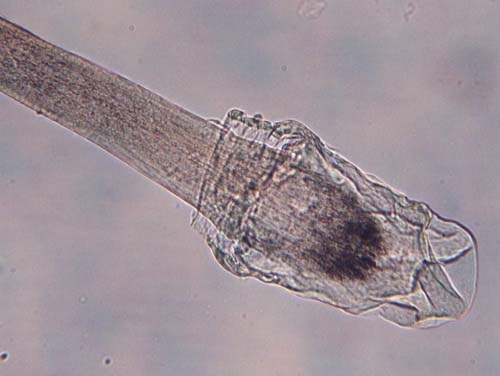Hair is a common type of evidence submitted to the trace section for analysis. On average, humans shed approximately 100 head hairs per day. Because we are continuously shedding hairs, forensic analysis of hairs is beneficial to the establishment of associations between individuals, a person and an environment, etc. (Example: a questioned hair from a victim’s jeans is examined and found to be consistent with the suspect’s hair. This examination has provided evidence that an association may have occurred between the suspect and the victim).
A hair is a fibrous outgrowth from the skin of mammals and consists of three anatomical regions, the cuticle, medulla and cortex. Characteristics within these regions are used to determine whether the hair is human or animal, racial origin and body area. A microscopic hair examination can also determine if a hair was forcibly removed, artificially treated or diseased. A comparison microscope can be used to compare a questioned hair to a known hair sample in order to determine if the hairs are similar and if they could have come from a common source.
A questioned hair and known hair sample are viewed, side-by-side, using a comparison microscope in order to determine if they have similar characteristics.


Questioned hair Known hair Comparison Microscope
Hair suitability for DNA examinations
Nuclear DNA analysis can be done on human hairs. The trace section assists the DNA section by screening hairs and determining their suitability for DNA testing. A microscope is used to examine the root end of the hairs, in order to determine if they are suitable. The hair in photo 1 is suitable for nuclear DNA analysis and the hair in photo 2 is not suitable.


Photo 1 Photo 2
If a hair is deemed not suitable for nuclear DNA analysis (ex. no root present or no tissue is attached), it can be sent for mitochondrial DNA testing. A root does not have to present in order for a hair to be suitable for mitochondrial DNA testing.

